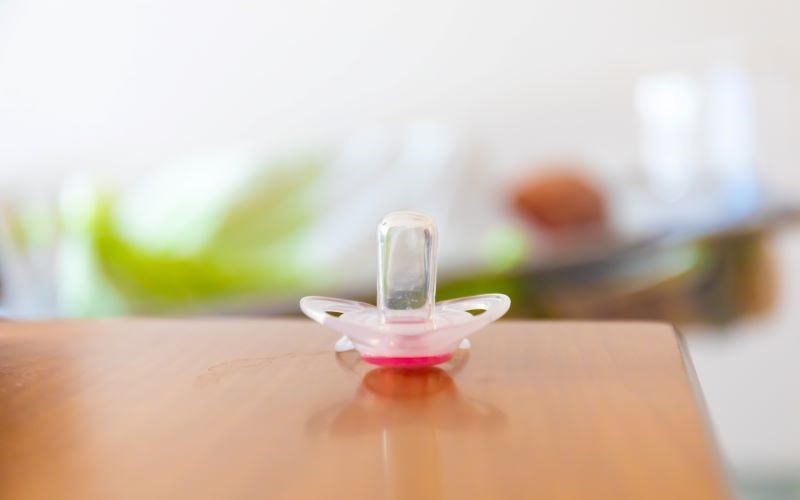"So you’ve congratulated your colleague on their news, now it’s time for some paperwork and planning maternity leave and cover, but where to start? Here we’ll give you an overview of what you need to know as an employer, and what you need to do next.
[addCTA blink=""/services/"" title=""Want to know about our HR services?""]
Maternity leave entitlement
An employee has a statutory right to maternity leave – to take 52 weeks off work after they give birth or adopt a child. Maternity leave is made up of 26 weeks of ordinary maternity leave (OML) and if the employee wishes to extend the duration of their leave, they can then start additional maternity leave (AML) taking any number from 27-52 weeks of leave in total.
It’s the employee’s decision how much maternity leave she wants to take. She should provide you with the date she wants maternity leave to begin and if she wants to return to work earlier than 52 weeks from that date, she must provide you with at least eight weeks’ notice of her intended return date.
Some people won’t be eligible for full maternity leave, for example, those who are not an employee as defined under the Employment Rights Act 1996. But they will be covered by pregnancy rights, which gives them time off for antenatal appointments and states they must take two weeks' leave after the baby’s birth (compulsory maternity leave).
Mothers are now also eligible to share their leave with their partner in the form of Shared Parental Leave.
Statutory Maternity Pay (SMP)
An employee that has worked for you for 26 continuous weeks and has given you the necessary 15 weeks’ notice of her pregnancy and who earns more than a set amount (currently £120 per week) is entitled to SMP for up to 39 weeks. This is paid at 90% of normal pay during the first six weeks and then for a further 33 weeks, is paid at a fixed statutory rate (currently £151.97 per week) or 90% of average weekly earnings – whichever is lower. As an employer, you can claim potentially all, or most of your employee’s statutory maternity pay back from HMRC, depending on your class one NI contributions.
An employee who doesn’t qualify for SMP can take unpaid maternity leave and may be entitled to Maternity Allowance.
Enhanced maternity pay
Many employers choose to offer enhanced maternity pay, increasing the amount payable to mothers above the level of SMP. This is an attractive benefit and can certainly help with attracting female candidates into your organisation, as well as helping with retention. When considering enhanced maternity pay, you need to take into account the additional financial impact this will place on your business, as it's likely you’ll be covering the role with an additional staff member during maternity leave. There is the option to add in a payback period so that if the employee doesn’t return to work after their leave period, they must repay the enhanced element of the pay; this is very common amongst employers who offer enhanced maternity pay.
Benefits entitlement while on maternity leave
Aside from pay, whilst the employee is on maternity leave, all their usual benefits must continue e.g. accrual of annual leave, company car/allowance and company pension contributions. Ensure you have discussed with your employee what they would like to do regarding their annual leave entitlement before they go on maternity leave so you can both plan accordingly without causing any unnecessary disruption to the business.
Keeping In Touch (KIT) days
If they wish to, an employee can work up to ten KIT days during their maternity leave, from at least two weeks after the birth of the child. KIT days are a fantastic way for your employee to be kept informed/involved whilst on maternity leave if they want to. Some colleagues prefer to have a complete break, so employers should be very much led by the employee when it comes to KIT days.
Payment for KIT days is equivalent to one day’s pay and must be capped at ten. KIT days should be agreed upon with the line manager in advance and remember that your employee is likely to be a bit nervous having been away from work for a sustained period, so plan the day for them and ensure colleagues are around to make the most of the time.
Returning to work after maternity leave
The employee has the right to return to the job they left, if they return during OML. If they return from AML, the employee has the right to return to either the same job, or one that is similar in terms of duties, skills, status and rewards.
If the employee decides not to return to work, she’ll still be entitled to receive SMP for the SMP period. Bear in mind all employees are entitled to make a flexible working request, so if you don’t have a flexible working policy in place, now is the time to do so.
What NOT to do:
- Comment that the employee’s pregnancy is an inconvenience for you or the business (or other negative comments); this is bad for your employee’s welfare, bad for general employee engagement, and also bad for the reputation of your business, so think before you speak.
- Pressure your employee to start or end their maternity leave at a particular time – this is entirely their decision, so leave it to them, but ensure you are informed of their decision so you can make necessary resourcing/handover plans.
- Make any announcements about the pregnancy without discussing it with your employee first.
- Contact the employee unnecessarily during their maternity leave; ensure you have an agreement about frequency of contact and outside of that, only contact them if it’s essential (e.g. important organisational changes).
What to do
- Have a maternity policy in place which explains the maternity leave rights and obligations in your business.
- When you’re informed of an employee’s pregnancy or adoption, acknowledge this in writing to them within 28 days – remember this is an exciting and also daunting time for your employee so be on hand to check-in with your employee to see how she’s doing.
- Carry out regular health and safety assessments and make changes to the working environment where needed to avoid any risk.
- Provide the employee with time off for ante-natal appointments.
- Ask for the maternity leave start date and eight weeks’ notice of their intended return to work date. If the employee changes either of these, check the correct amount of notice is given.
- Ensure that you and your employee agree what they are going to do about any outstanding holiday entitlement before their maternity leave.
- Offer the employee KIT days and pay these at the employee’s usual rate of pay.
- Discuss their preferences on contact during their maternity leave – method and how frequently; ensure you are lead by the employees on this.
- Keep them informed of organisation changes while they’re on leave, and anything that could result in their role being changed.
- Plan how you will cover for the employee while they are away - will you recruit for a maternity cover contract role? Remember that recruitment takes time, so don’t leave this to the last minute.
The legal requirements around maternity leave can be confusing, so if you need some HR expertise on how to manage maternity leave, including conducting health and safety assessments, we can help. Get in touch for a chat with one of our HR consultants.
If you liked this, you’ll like: What do I need to do about the extra Bank Holiday this year?"













